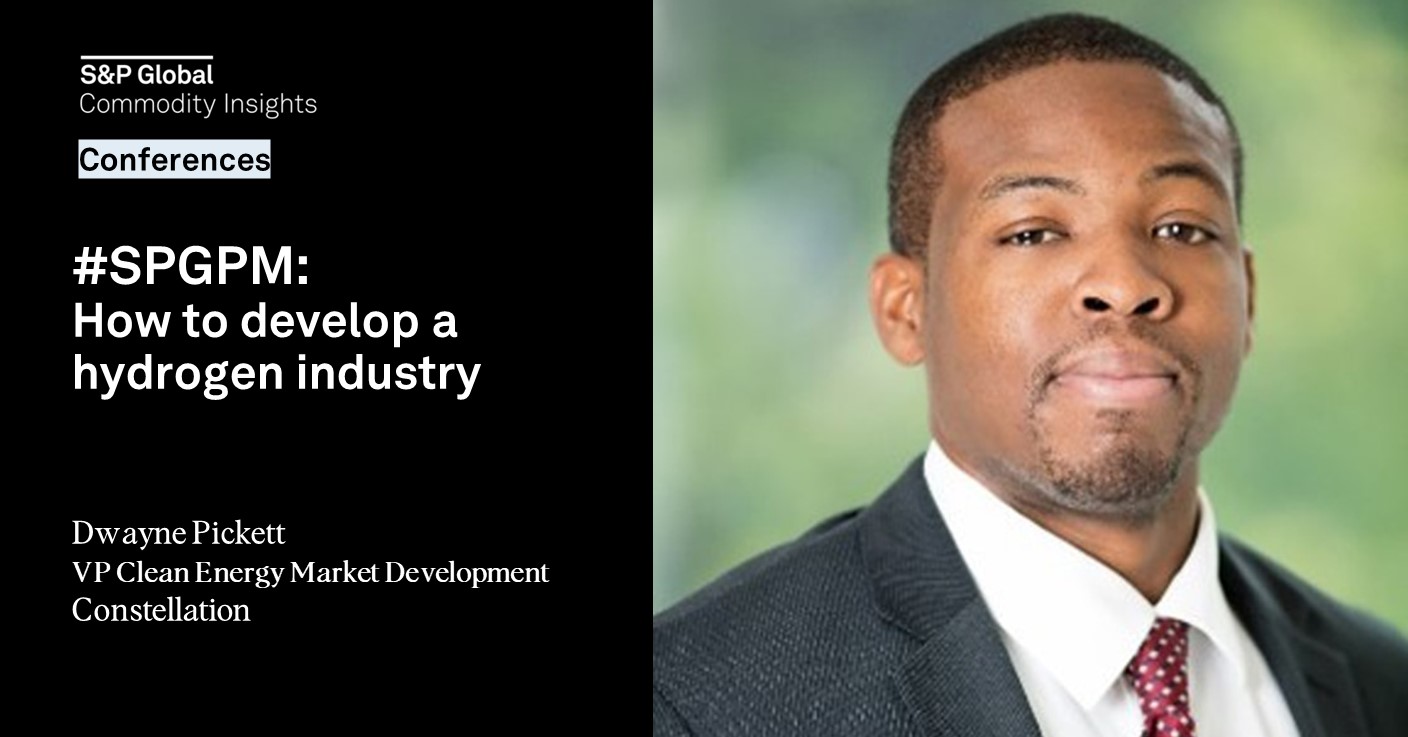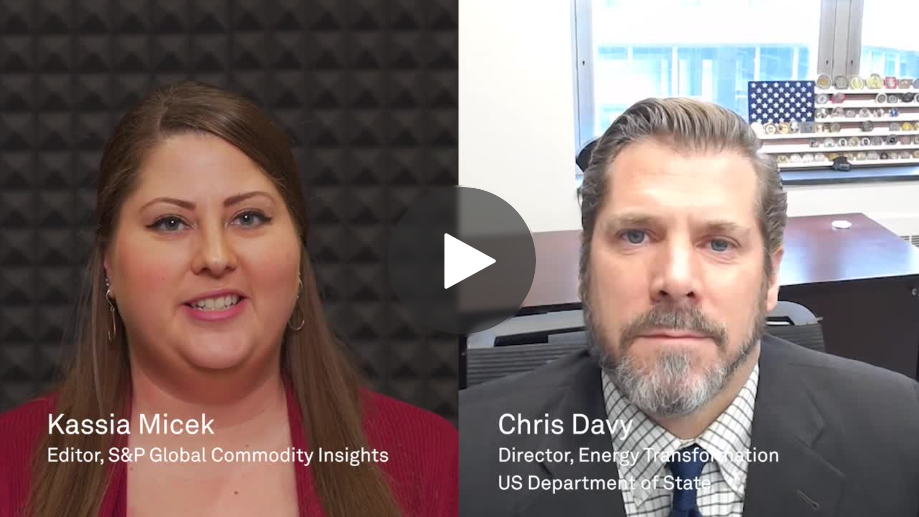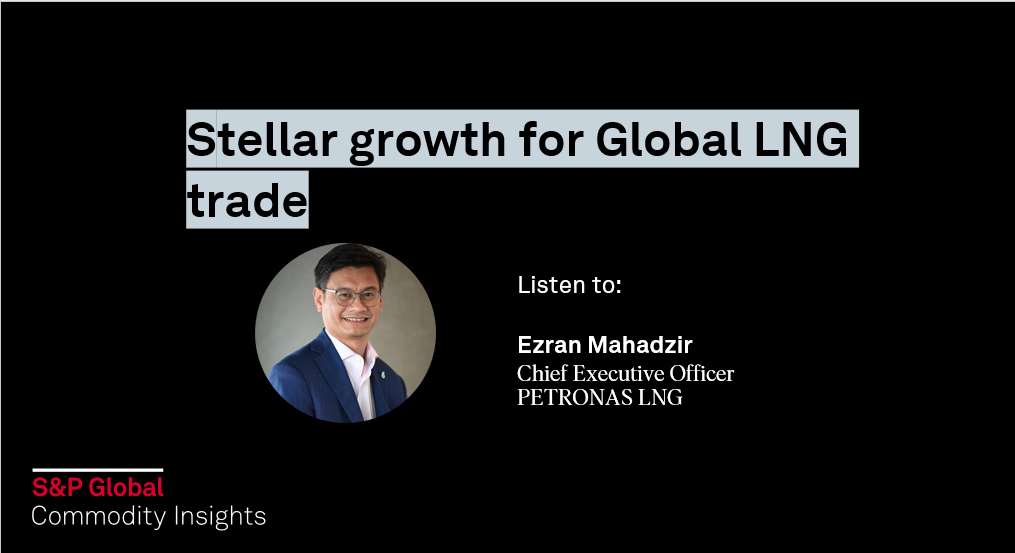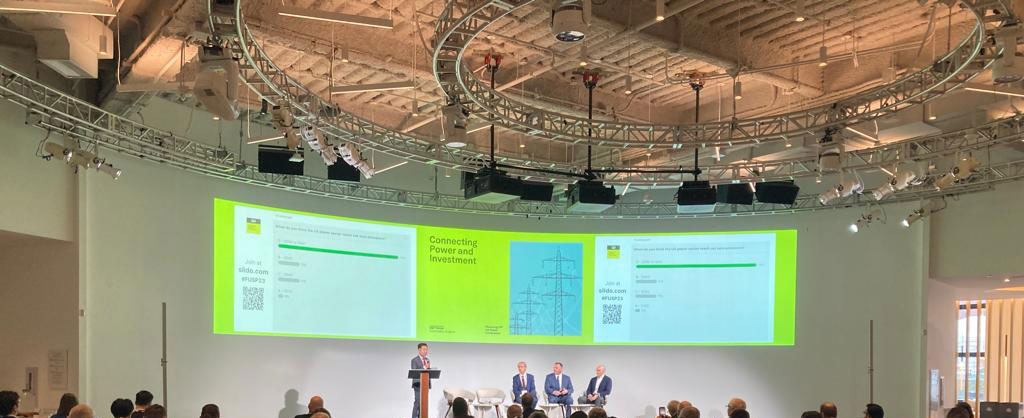/ Conferences
APPEC 2024
September 9-12 | Singapore
/ Conferences
/ Conferences
September 9-12 | Singapore
/ Conferences

After decades of slow load growth, surging power demand from electrification of the US economy in a context of increased technical and environmental pressures poses multiple challenges for power markets and utilities, executives said April 16.Some of the executives, speaking at the S&P Global Commodity Insights Global Power Markets event in Las Vegas, suggested ways of meeting those challenges include improved and expanded generation and transmission technology.From about 1990 to about 2007, load growth in the Lower 48 states averaged about 2% a year, said Douglas Giuffre, senior director for North American power markets analysis at S&P Global Commodity Insights, but in the wake of the Great Recession, load growth slowed to about 0.2% a year, as energy efficiency efforts bore fruit.Combining utility projections with consultants employed by regional transmission organizations, "they had consistent load forecasts that over-projected," Giuffre said.The North American Electric Reliability Corporation noticed this and revised its projected load growth percentages downward to about 0.5% in 2022, but more than doubled that projection in 2023 to about 1.2%, partly because of surging demand from data centers, Giuffre said."For many parts of the country, this is a dramatic shift from where load growth had been to know what's expected to come," Giuffre said. "And this is going to require a lot of utilities and RTOs to kind of wrestle with this question: How do you manage to meet this potentially rapidly growing demand that we just haven't seen? … What has changed, clearly, is the sudden discussion of data centers."Data centers currently consume about 185 TWh a year, "the equivalent to all the residential electricity consumption in Florida and New York today." Across the various RTOs, data center load is projected to add about 250 TWh, "the equivalent of adding Texas and California residential load," Giuffre said.'An uptick in gas' Such surging demand cannot reliably be served, at least in the short term, without adding natural gas-fired generation, Giuffre said."Natural gas had been obviously for quite some time a leading resource in the market, but we're likely to be at a 25-year low in terms of new gas additions this year," Giuffre said. However, S&P Global researched the integrated resource plans of several utilities, and "what we’re seeing is an uptick in gas either to replace existing coal-fired generation or as peaking capacity to support renewables."Vincent Sorgi, president and CEO of PPL, the Allentown, Pennsylvania-based utility holding company, said, "The key to the clean energy transition and getting renewables deployed at scale is natural gas.""Batteries right now are significantly more expensive than building new natural gas, and the new natural gas units are incredibly efficient," Sorgi said during a "fireside chat" with Xizhou Zhou, vice president of the Gas, Power and Climate Solutions group at S&P Global."I think, in general, politicians understand the value of natural gas so they seem to be a lot more amenable" to allowing its growth, Sorgi said, particularly if it is combined with carbon capture and sequestration or alternative fuels such as renewable natural gas or hydrogen."So, I think you’ll continue to see that in integrated utilities … for more fossil generation," Sorgi said.Cindy Crane, CEO of PacifiCorp, the Portland, Oregon-based utility holding company, said her company has proposed gas-fired generation to some utility regulators "under the condition that they’re capable to convert to hydrogen.""We are saying that those are needed to bring that reliability for a longer term in our system," Crane said.PacifiCorp is also pursuing nuclear power development in the form of a 385-MW small modular reactor pilot project with Bill Gates’ TerraPower, with groundbreaking schedule for June 10 in Caspar, Wyoming, Crane said.Transmission expansion PacifiCorp has also embarked on a 20-year transmission expansion plan involving 345 kV and 500 kV lines estimated to cost about $12 billion, with to of the larger segments resulting in a high-voltage network of more than 1,100 miles of line."Then, we have several hundred miles more that are scheduled to be coming online between 2025 and 2028," Crane said.Doug Cannon, president and CEO of NV Energy, which serves significant load centers in Las Vegas, Reno and Carson City, said his company is building more than high-voltage lines along the state’s western border to Reno, east across the middle of the state to Ely and then south to link up with NV Energy’s existing grid."What you're going to see if you picture Nevada, there's going to be a giant 500-kV triangle that goes around the entire state that is going to improve reliability for our customers [and] dispatch our system in a more efficient way, dropping energy costs for customers," Cannon said. "It's also going to open up a lot of area that previously could not be developed for renewable energy. There's tremendous solar potential along the west side of the state of Nevada, where there was no transmission. In addition, in the center part of the state, there's more solar potential, as well as improve the geothermal potential."

Ahead of the upcoming Global Power Markets Conference in Las Vegas, listen to Vice President of Clean Hydrogen Market Development at Constellation Energy Dwayne Pickett and Energy Transition Reporter Daniel Weeks in a discussion of how the nascent hydrogen industry could be affected by tax credits and increased power demand.For more coverage of Global Power Markets Conference, go to https://cilive.com/conferences

Chris Davy, deputy assistant secretary with the US Department of State’s Office of Energy Transformation, discusses the challenges to investing in the energy transition in the Caribbean and the resources developers are looking at to drive the transition away from fossil fuels.

In a highly unusual move, Arizona utility regulators ordered their staff to draft new rules that would repeal the state's existing mandates for renewable energy and energy efficiency.The Feb. 6 order by the Arizona Corporation Commission, approved by a 4-1 vote at an open meeting, sets the Republican-led state apart from most other jurisdictions across the country, which are pushing utilities to source electricity from emissions-free sources.According to the Energy Information Administration, as of November 2022, 36 states and the District of Columbia had established renewable portfolio standards. In Arizona's case, the ACC first established the state's renewable energy standard and tariff in 2006. That standard requires regulated utilities to obtain 15% of their power from renewables no later than 2025.But the mandates have become unpopular with some Republicans, who claim the rules are raising prices for utility ratepayers since the costs utilities incur to comply with the rules are passed on to customers.In a joint press release Feb. 8, ACC Chairman Jim O'Connor and Commissioner Kevin Thompson claimed that the REST mandate has cost ratepayers about $2.3 billion since it was implemented in 2006.O'Connor said that at the time the REST rules were approved, then-Chairman Jeff Hatch-Miller promised that the commission would review the rules every year to ensure they remained in ratepayers' best interest. "Those reviews never occurred, and costs were never considered," O'Connor claimed.O'Connor also said that utilities often ended up acquiring power above market prices to comply with the renewables mandate. "Mandates distort market signals and are not protective of ratepayers," he claimed.The repeal of the REST rule has concerned some renewable developers, who say the action is part of a broader campaign in Arizona against renewable development by industry opponents.Speaking remotely to the Feb. 6 ACC meeting, Autumn Johnson, executive director of the Arizona Solar Energy Industries Association, claimed that "a half-dozen" bills have been proposed in the state legislature, "all intended to make it harder or more expensive to build utility-scale renewables." She also said that three local jurisdictions in the state have imposed moratoria or limits on new renewable projects."I worry that, on top of all of this, the only state in the country to repeal what is already an extremely modest RPS sends the wrong signal to the industry," Johnson said. "It says, 'Take your business and your jobs and your dollars elsewhere.'"In addition to the REST mandate, the ACC's order also calls for revoking efficiency rules for both electric and gas utilities. Those rules, which went into effect in 2010, have cost ratepayers just under $1.1 billion to date, according to O'Connor and Thompson."Living in Arizona, we all should be mindful to practice energy efficiency," Thompson said. "But too much focus has been placed on societal metrics and costly feel-good programs that don't prioritize ratepayer affordability and grid reliability."He added: "Once the mandates are removed, it will be incumbent upon Arizona's utilities to propose programs that actually work to benefit ratepayers and protect the integrity of our grid."In their statement, the two commissioners said the process of revoking the rules could take over a year due to a requirement for public comment and the need to submit the action for review by other state agencies.

Global LNG trade witnessed a stellar growth in 2022, driven particularly by European demand as Russia's invasion of Ukraine meant sanctions resulting in, among other things, the sudden loss of pipeline gas. Emerging nations were also actively seeking cargoes for their soaring energy needs. The tight supply led to an unprecedented price volatility, causing significant demand destruction. What does the future hold for LNG markets and will the price volatility persist? How will Petronas LNG steer through? Petronas LNG CEO Ezran Mahadzir shares his views with SP Global Commodity Insights Senior Editor Surabhi Sahu to answer these and other questions critical to global LNG trade.How would you describe the dynamics in the LNG market over the past two years, particularly after Russia's invasion of Ukraine? Do you expect the price volatility to persist?Before the Russia-Ukraine war, we went through COVID-19 lockdowns. That was also a shift. When the Ukraine crisis emerged, there wasn't enough supply to meet demand because prior to that, the price signals did not incentivize investments.Being a long-term player in the LNG industry, we would like to see more stable LNG prices, which allow investments, and [prices that] are not too high to cause demand destruction. However, the market is expected to stay volatile in the medium term -- until new projects come toward 2026-27, with the Qatari expansion and new US Gulf projects.The volatility makes it very difficult to predict prices but certainly I do not think they will be at the pre-COVID levels of $7-$8/MMBtu.We also don't know to what extent the Israel-Gaza conflict would escalate. If new actors came in, you might see prices shoot up from present levels.Given present storage inventory levels, it appears Europe is well prepared for the winter season. Inventory levels in North Asia are also healthy. We must commend the European market, both policy makers and players, for the speed at which they have increased capacity.But a prolonged harsh weather could potentially trigger more spot market price volatility. To cope with demand and supply shocks, participants should focus on assessing that risk and strategize to mitigate disruptions.It is also important for end-buyers to look at the situation from a long-term perspective. At the end of the day, energy security is still key.Are shipping restrictions at the Panama Canal posing risks for Asian supply? How are players mitigating risks?On the Pacific side, enough supply sources exist to meet current demand, particularly the historical long-term requirement of Japan and South Korea. However, with demand growth, supply to the market has become and is still slightly scarce.That's where we, via our position in Bintulu, provide a competitive advantage because we are directly facing those markets. We don't have the risk of the Panama Canal and the region we're in is stable in terms of geopolitics.Meanwhile, the challenges posed by the waterway have caused an uptick in LNG cargo swapping among industry players to trim risks in a volatile market as lack of investments amid growing LNG demand, uncertainty over severity of Northern Hemisphere winter and geopolitical risks lurk.Related contentNews: LNG freight rates from US Gulf Coast to NWE, Asia weaken as demand lagsPodcast: The wait is (still) on at the Panama CanalAt the end of day, irrespective of Panama Canal challenges, players should optimize their portfolio by collaborating in different ways including by swapping cargoes. Any cost savings will not only be advantageous for suppliers but will also benefit the market.What kind of indexation would you favor when it comes to pricing LNG contracts?I think that really depends on the market. Historically, LNG was always a conversion fuel to all.In the company's traditional markets -- Japan, South Korea and even China -- the indexation formulas are still oil-linked, as opposed to TTF, Henry Hub, NBP in a much more liquid Atlantic market.We are flexible so long as the prices and formula would allow a fair risk and reward, and the risks can be managed by all related parties. The formula we bring in is very much a two-way formula to solve various issues along the way.Southeast Asia is certainly a region where we would not only like to participate in but also become a dominant supplier. The burgeoning population, economic size, need for energy and thrust on decarbonization policies in Southeast Asia means that it will be taking in more LNG and, given our geographical location, Petronas is able to supply LNG cargoes on a competitive basis.How does Petronas see LNG's growth potential and what are some of the projects that you are excited about in this space?In the medium and long term, we believe that the gas market will grow because it is the cleanest hydrocarbon source and a very good energy transition fuel. At the right price signals, the market will invest in future capacities.Petronas has taken a final investment decision on a new project in Sabah -- ZLNG -- to bring in 2 million mt/year of LNG capacity by the second half of 2027.We are quite excited about getting out our first cargo from LNG Canada. That should happen in the second half of 2024 as part of a commissioning program. There are also further opportunities to grow LNG Canada and we are in discussions to progress phase 2.Separately, Petronas is in discussions with Argentina's YPF for a proposed LNG plant. If done properly, that could be a game changer for the world market.Petronas also has an offtake contract with two parties in the US Gulf -- Cheniere and Venture Global.Having new supply nodes allows us to further strengthen our portfolio globally. We can draw upon our experiences from the Pacific and apply it to the Atlantic.How does Petronas view LNG bunkering prospects, given the push toward zero-carbon marine fuels?We believe that the LNG bunkering market will grow. Our Pengerang regasification terminal provides a platform for reload and LNG bunkering operations. We also have a regasification terminal in Sungai Udang, Melaka, that can do reloads for LNG bunkering. We have a dedicated LNG bunkering vessel that plies in the Strait of Malacca, among the busiest shipping lanes in the world.How is Petronas taking steps to harness cleaner LNG as it accelerates its energy transition journey?It's important to distinguish between carbon abatement and actual carbon reduction. Carbon neutral LNG by buying carbon credits is an abatement process and we do that, having traded about six carbon neutral LNG cargoes, while also focusing on carbon footprint reduction.At LNG Canada, the molecule itself has low carbon because it is shale gas. Along with partners, we are developing it to be among the lowest emissions LNG plant by using electrification and efficient gas turbines.Upon completion in 2024, the Petronas LNG Complex in Bintulu will also begin shifting from old gas turbines to electrification from hydro. In addition, the company's LNG vessels are modern, fitted with new technologies and more efficient.On the upstream side, Petronas has also taken an FID on the Kasawari carbon sequestration project offshore Sarawak. The project, which should come online in 2026, will result in about 3.3 million mt/year of CO2 capture, making it one of the largest carbon capture and storage projects worldwide.
Alex Klaessig, Senior Director, Hydrogen and Renewable Gas Forum at SP Global Commodity Insights, explores the potential impact of clean hydrogen in different sectors, from transportation and electric power to chemical feedstocks and industrial heat. Finally, Alex addresses how hydrogen developers in the US view the Inflation Reduction Act (IRA) as they await the final guidance.Conferences LIVE
Listen now as Manoj Sinha, Co-Founder and CEO, Husk Power Systems discusses nominations for the Global Energy Awards Energy Transition - Power Finalist award! For a quarter century, we have been honored to recognize the energy sector’s exponential growth and rapid progress. As the world comes together to tackle climate change issues at COP28, we are gathering the industry to acknowledge the companies and individuals working on the crucial, innovative, practicable solutions that will solve those problems. Shine a spotlight on your organization’s accomplishments and join us this December 7th in New York City, USA to celebrate the many achievements and successes of the global energy community. Learn more now

As US power market participants grapple with recent offshore wind industry challenges, there is expectant optimism about the US Inflation Reduction Act shifting to a more actionable phase for investors as further guidance around tax credits emerges, which could help foster a long-term growth trend for distributed energy generation and associated infrastructure, experts said Oct. 30.With offshore wind projects across the US Northeast struggling due to higher costs than when power purchase agreements were signed, New York regulators in October dismissed a request by several developers to raise the contracted offtake price they accepted in their contracts following competitive solicitations."I work in a world where there is some dissonance going on at the moment," Doreen Harris, president and CEO of the New York State Energy Research and Development Authority, said during the S&P Global Financing US Power Conference that was held in New York City.New York’s landmark climate law, the Climate Leadership and Community Protection Act, mandates 100% zero-emissions power by 2040 and a big part of meeting that target is predicated on 9 GW of offshore wind power capacity by 2035.The development pipeline for those offshore wind projects was moving ahead fairly smoothly until armed conflict in Europe rippled through global energy markets, Harris said, with significant impacts in New York on things like supply chain costs and bottlenecks. "As policymakers we recognize that we have to create that durable market signal in order for the markets to invest and that’s really what New York’s climate law has done," she said. The scoping plan for how to enact the climate law considered "massive load growth – a doubling of our load in the state over the coming decades" and reliance on a 15 GW of zero-emissions dispatchable resources to balance out the renewable generation, Harris said.The state had built up a 14-GW portfolio of projects that signed power delivery contracts with NYSERDA that would have gotten the state very close to another of its goals which is to have 70% renewable power by 2030. The global energy crisis of the past few years impacted New York projects due to increases in inflation, supply chain constraints and interest rate volatility that caused problems for project developers, Harris said.This resulted in most of that 14 GW pipeline of projects seeking to renegotiate their contract terms. "We as a state are making quick work to assess the status of these pipeline projects to determine which could advance, which will not and ultimately backfill any gaps lost through attrition of that portfolio," she said. There is a proceeding underway at the New York Public Service Commission into what constitutes a zero-emissions dispatchable resource and what policies will be needed to build them.That proceeding will be "critical" and will "set the stage for the next decade of investments past 2030 … and the massive amount of electrification that will come with it," Harris said. Infrastructure investment For renewables to continue penetrating the market, broad support is needed in transmission, smart meters, behind-the-meter technology, and infrastructure for electrifying transport, David Giordano, global head of BlackRock Climate Infrastructure, a division within investment giant Blackrock, said. "We are looking as a firm at the transition to a low-carbon economy as the greatest movement of capital I would argue any of us will see in our careers from a macro-economic level," he said.By 2030, $4.5 trillion could be invested in the energy transition in the US. "We’re talking about a massive shift in capital deployed," Giordano said.Additionally, though often cited as a challenge, interest rate increases could actually create more resilience in projects and the transparency that higher rates will create will result in a more stable investment foundation, he said.Giordano also said individual and corporate interest in decarbonization appears to be making people more willing to pay to pay a bit more for lower-carbon goods and power. Globally, people are looking for something that is reliable and to account for the amount of carbon that goes into the goods and services they are consuming which will have an inflationary impact on pricing, but the urgency to decarbonize will counterbalance the pressure on pricing, he said.Himanshu Saxena, CEO, of Lotus Infrastructure Partners, formerly branded as Starwood Energy, said almost all energy sectors have been impacted by the US Inflation Reduction Act and investors are waiting for some additional information from the US Internal Revenue Service on tax credits for hydrogen and carbon capture.A lot more can happen next year depending on IRS guidance, it could be a "year of execution," he said.The last year has been about preparing for new opportunities, Rich Roloff, managing director at LS Power, said. "We see this as probably an eight- or ten-year secular growth cycle from here," Roloff said.

Doreen Harris, president and CEO of the New York Energy Research and Development Authority discusses the US clean energy future with SP Global Commodity Insights Learn more at the Global Power Markets Conference | Las Vegas | April 15-17, 2024 Conferences LIVE
MARCH | Houston, TX
Established in 1985, the World Petrochemical Conference is the premier assembly of industry leaders, global experts and government officials convening for thought-provoking dialogue and in-depth discussions around the major strategic issues facing all…